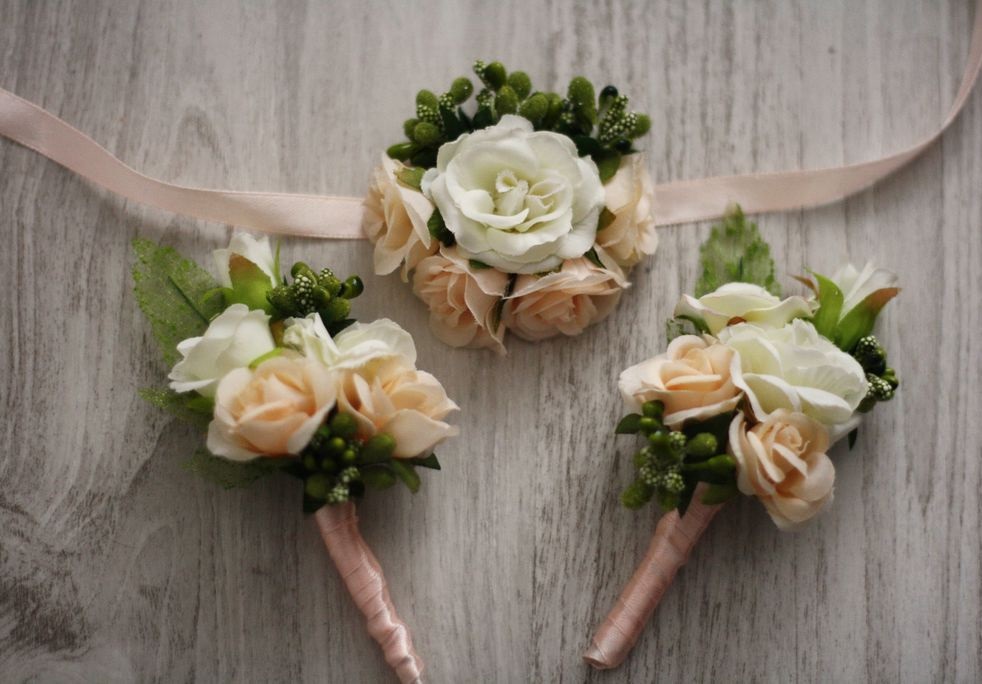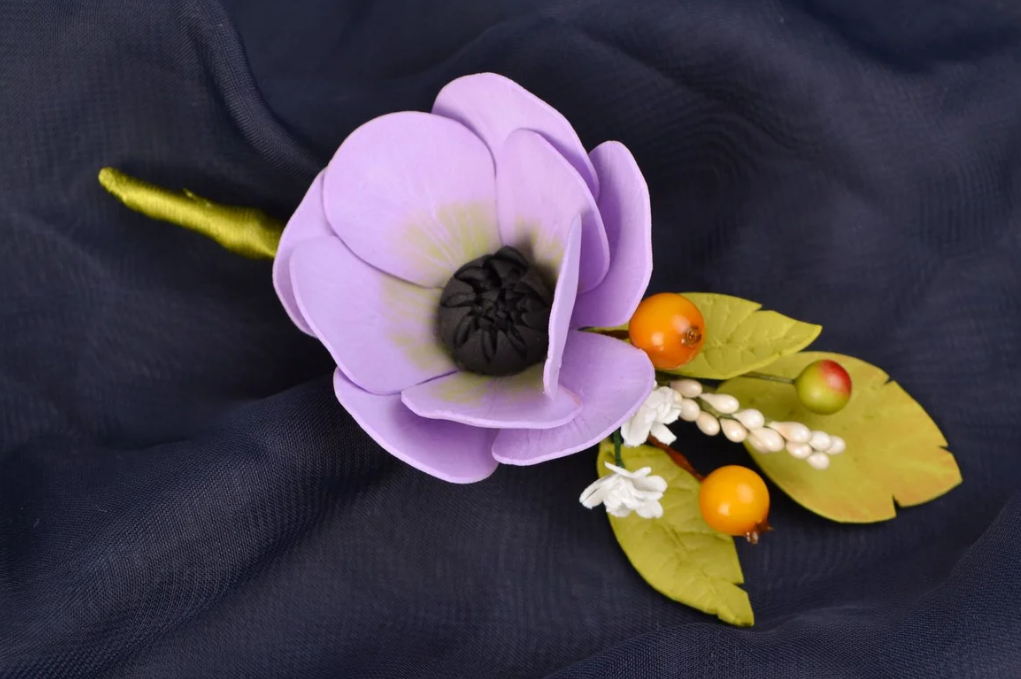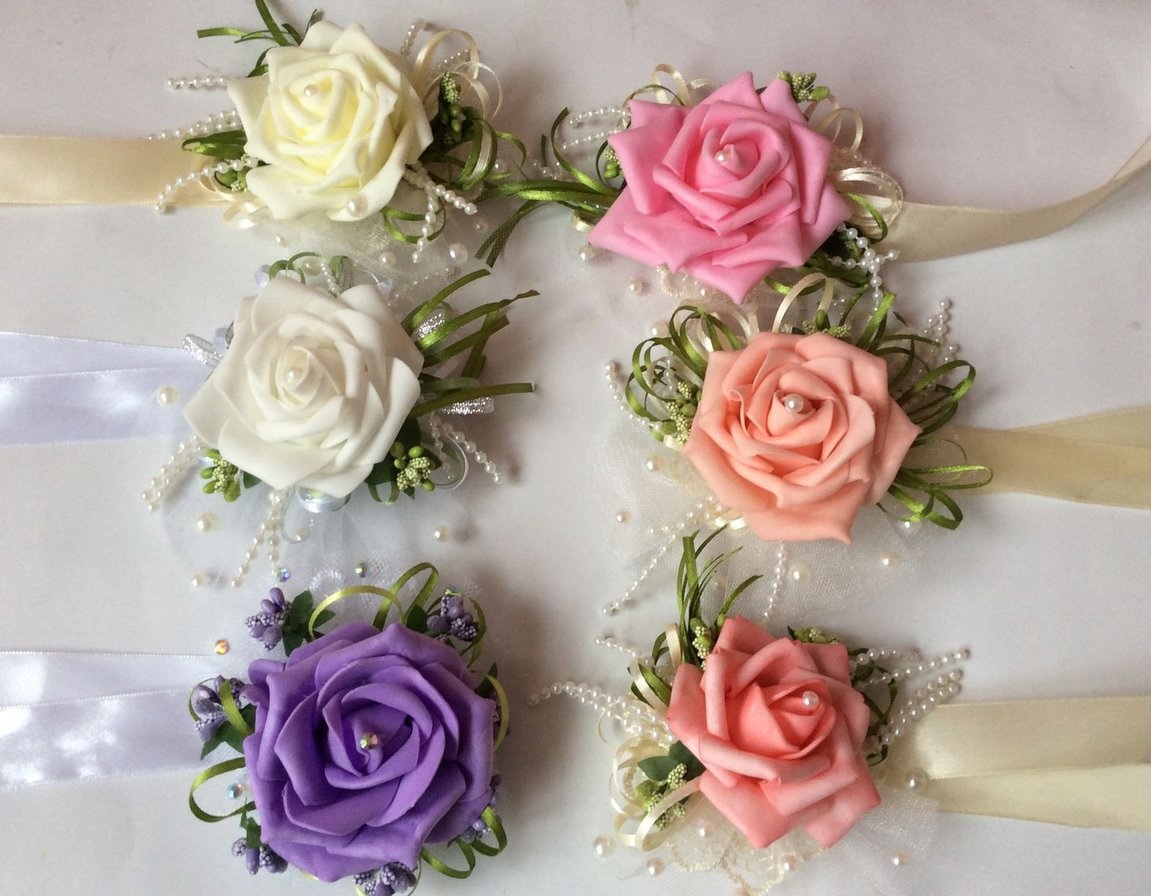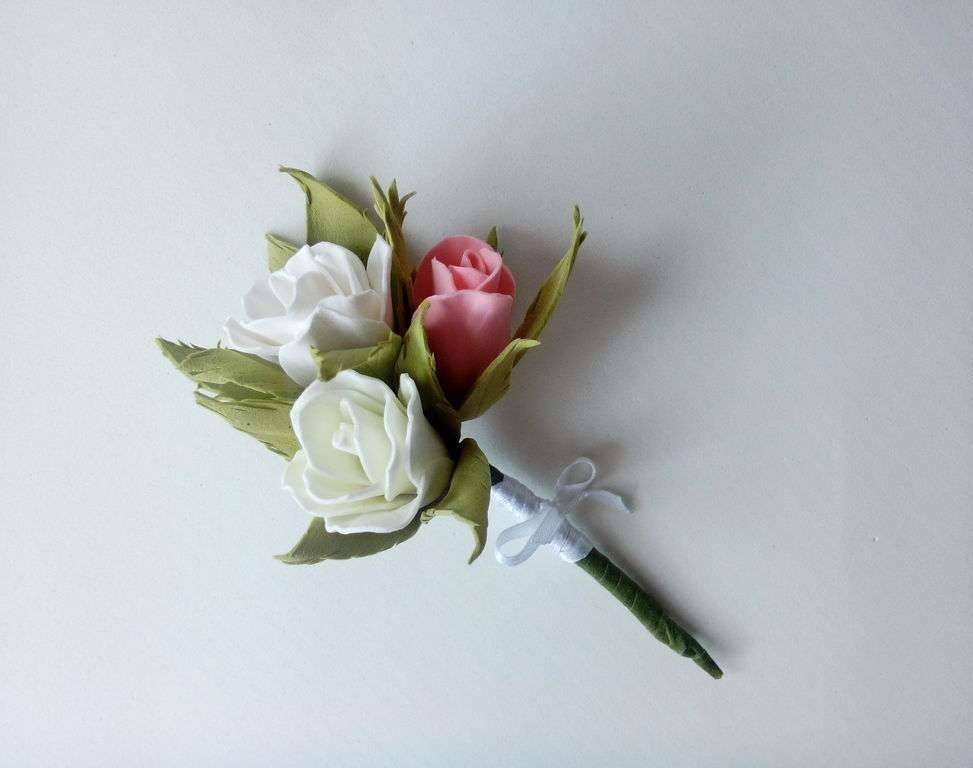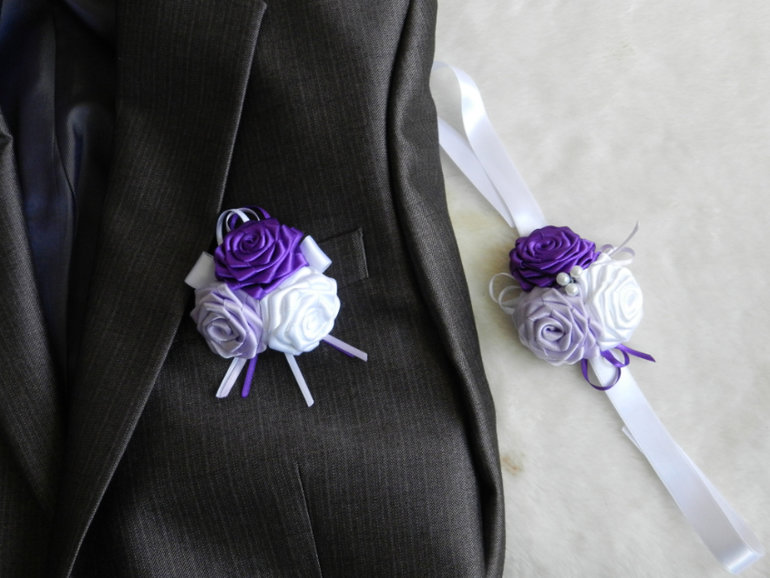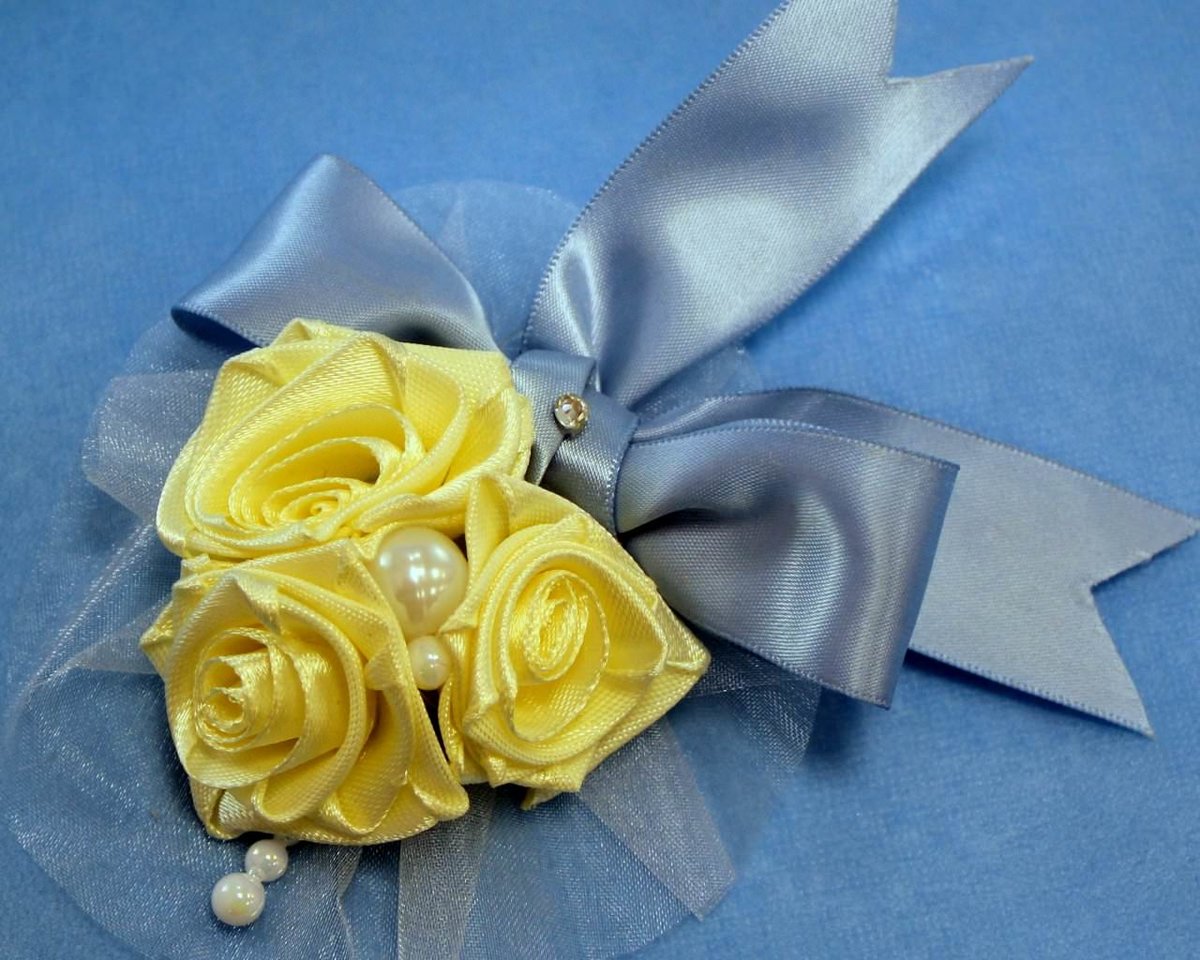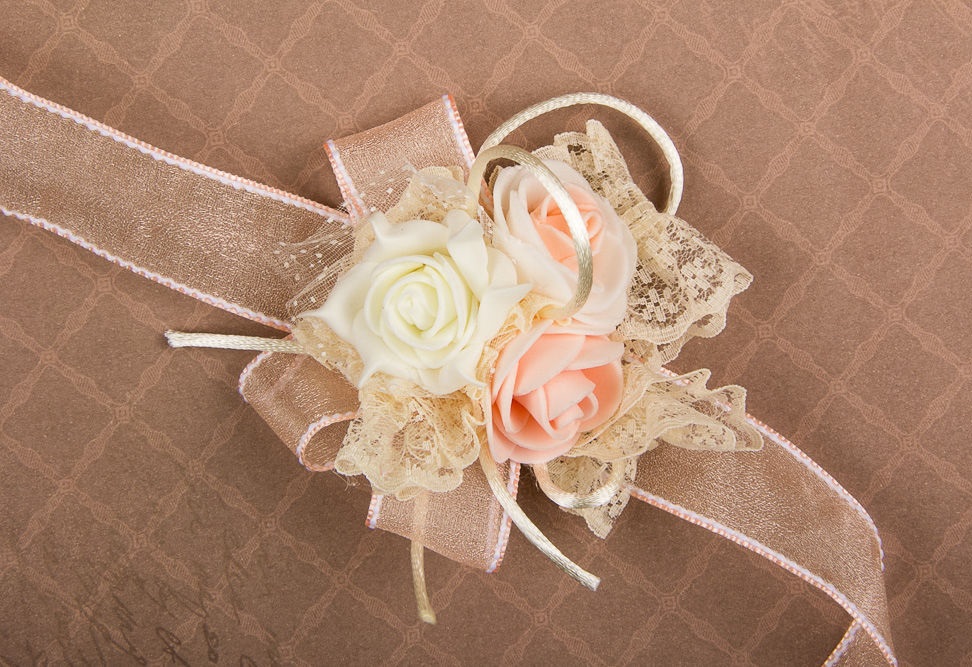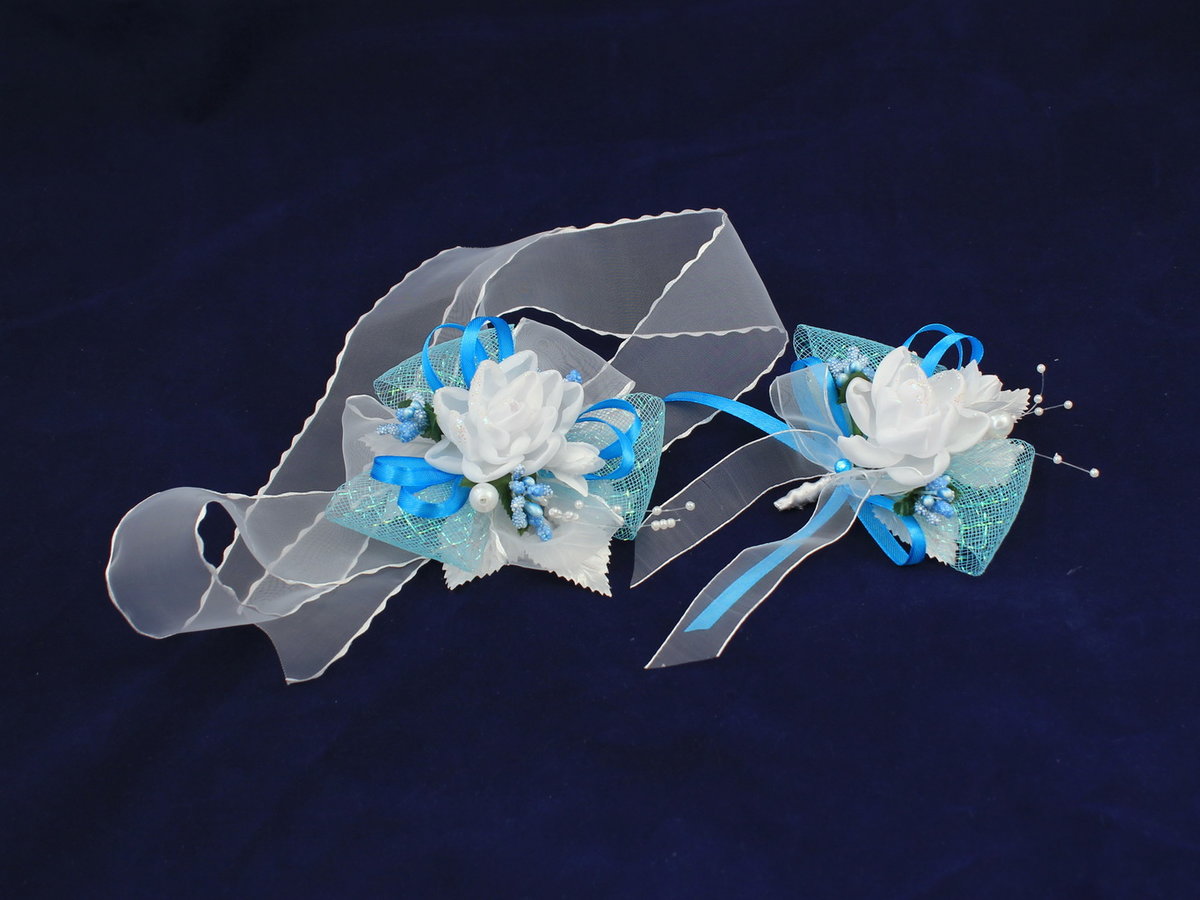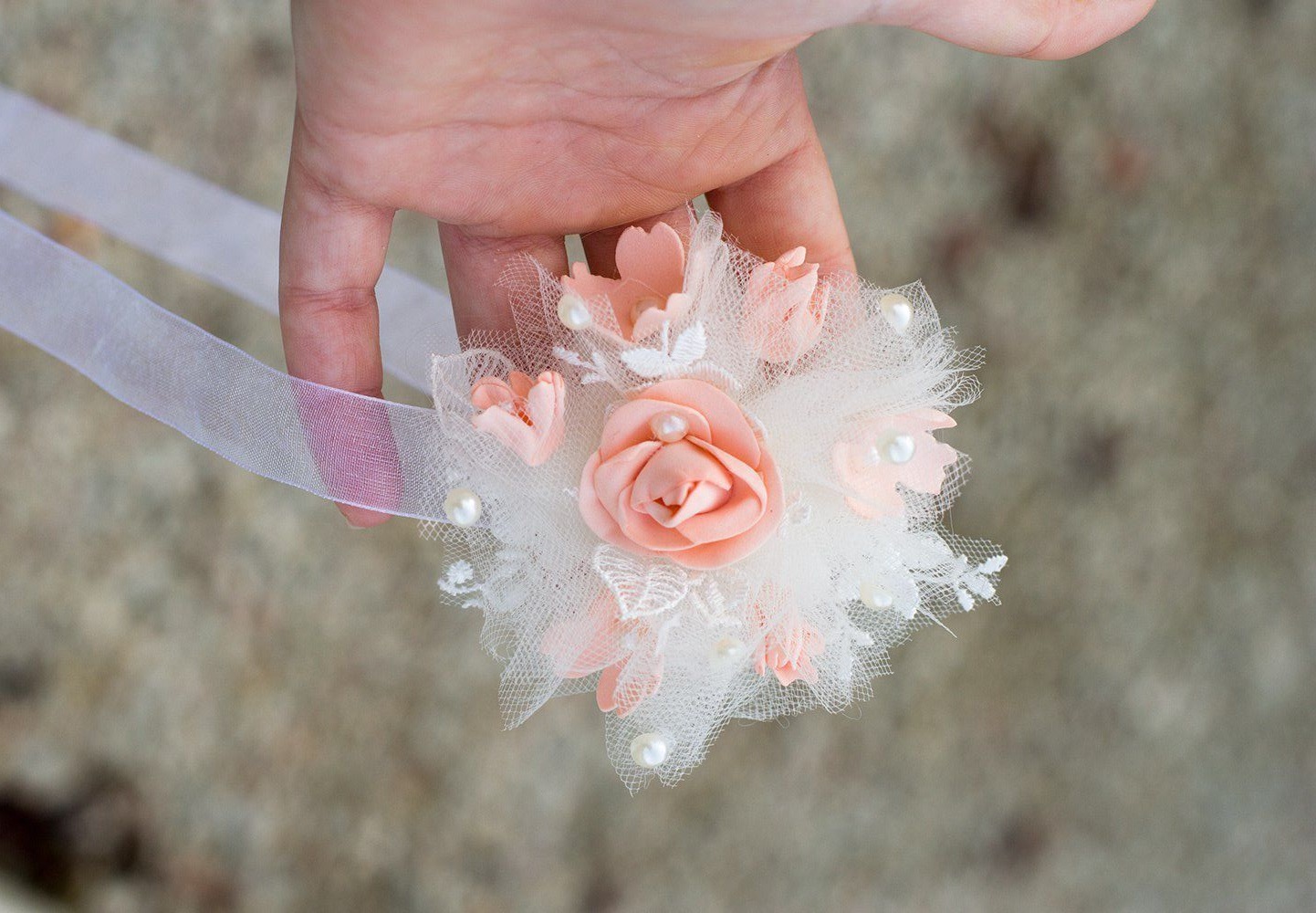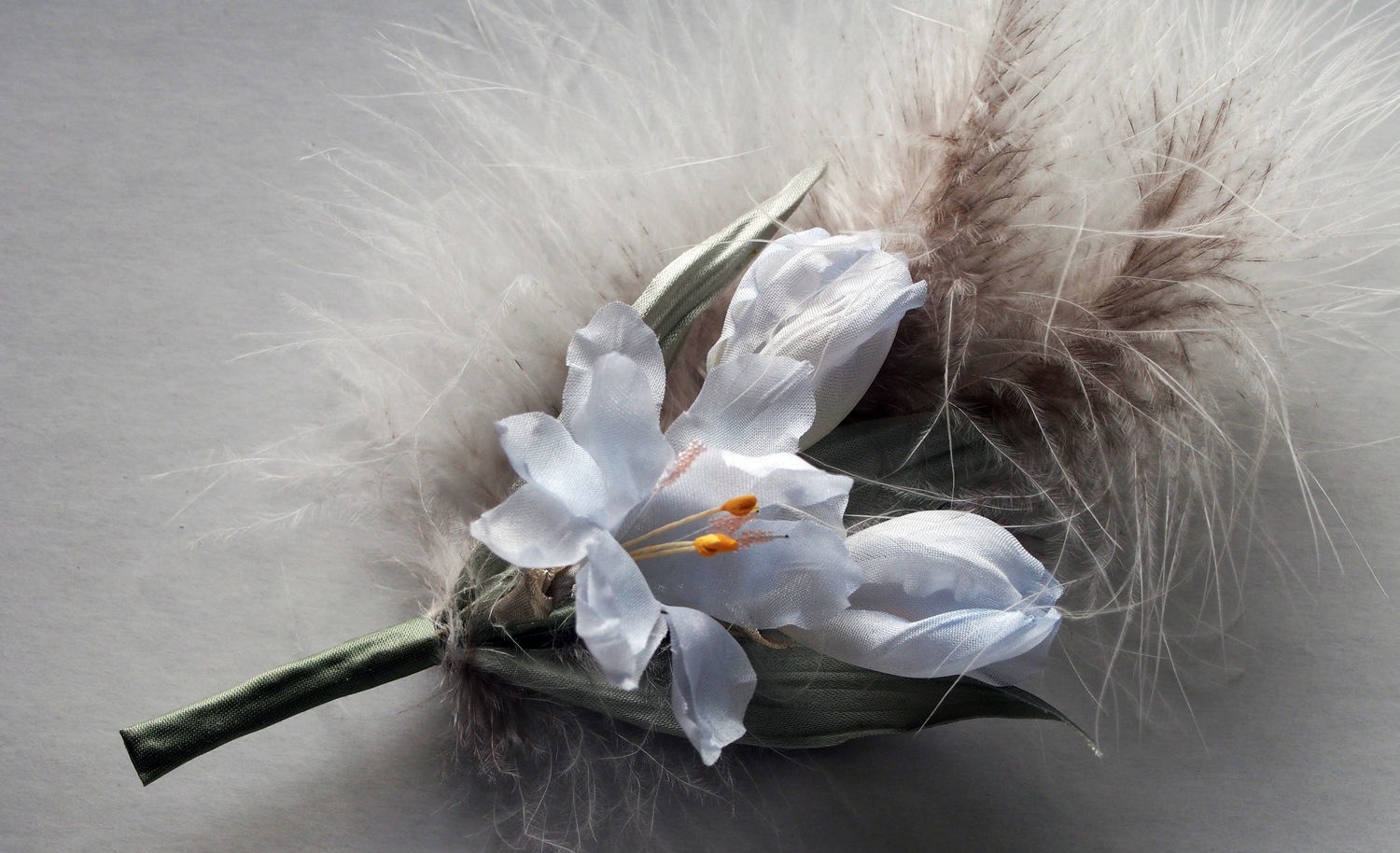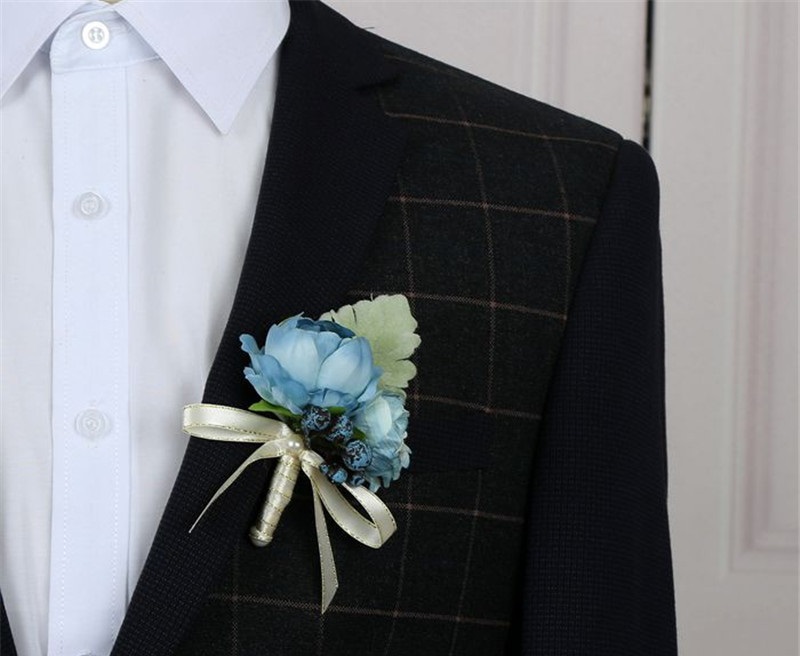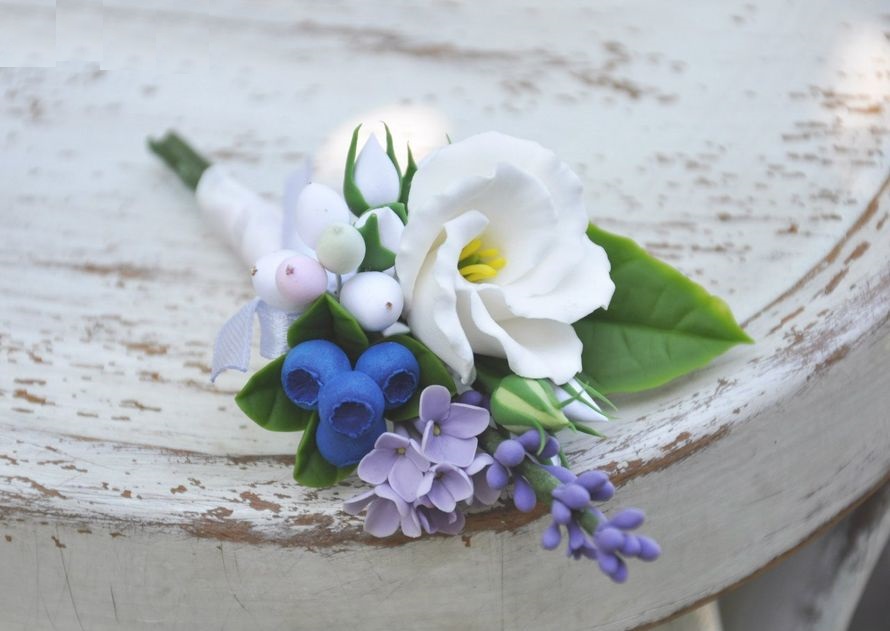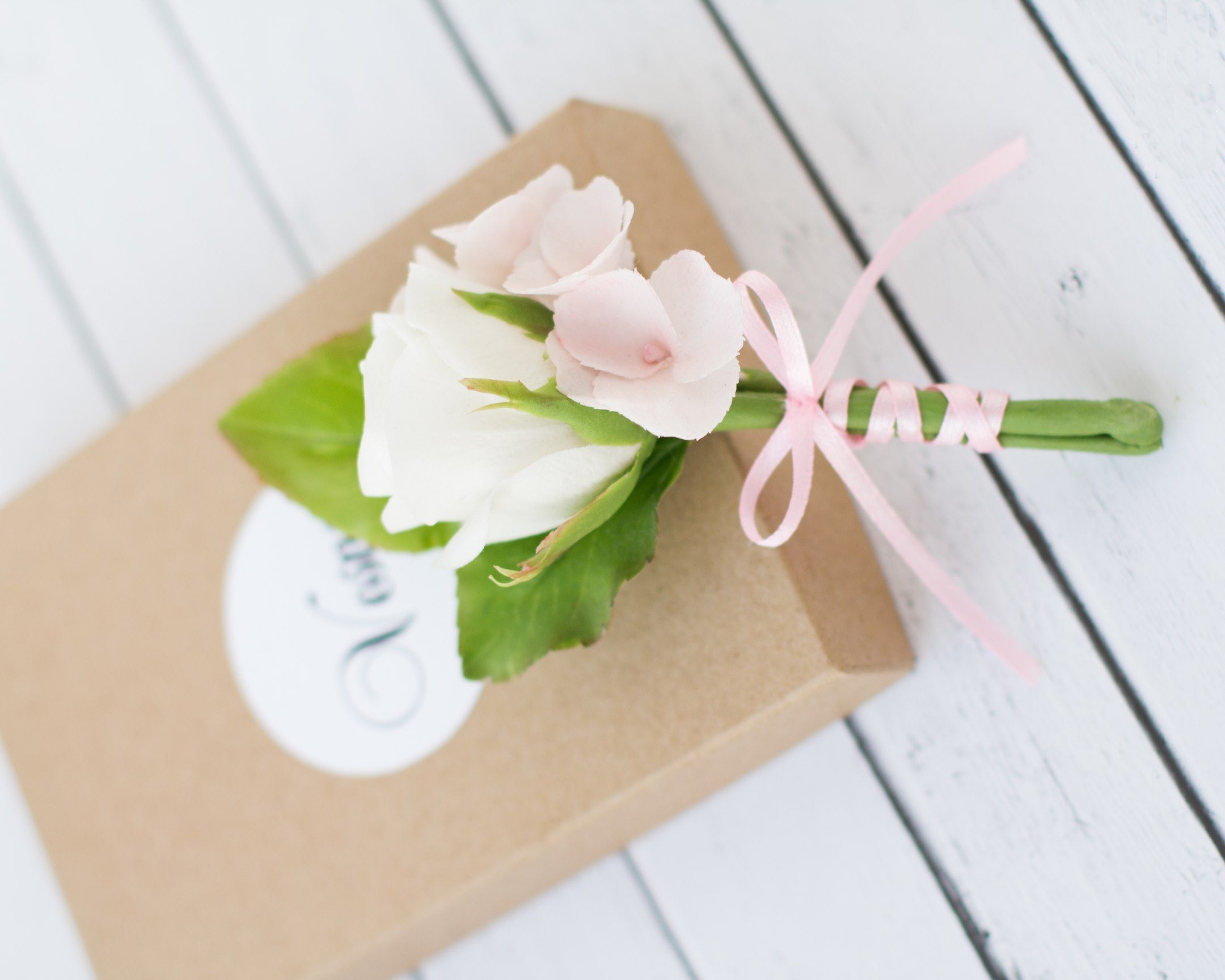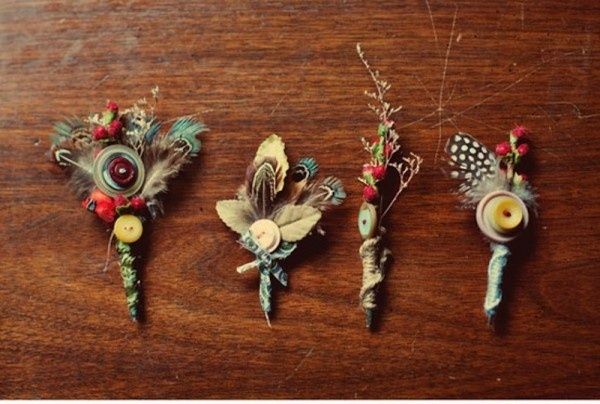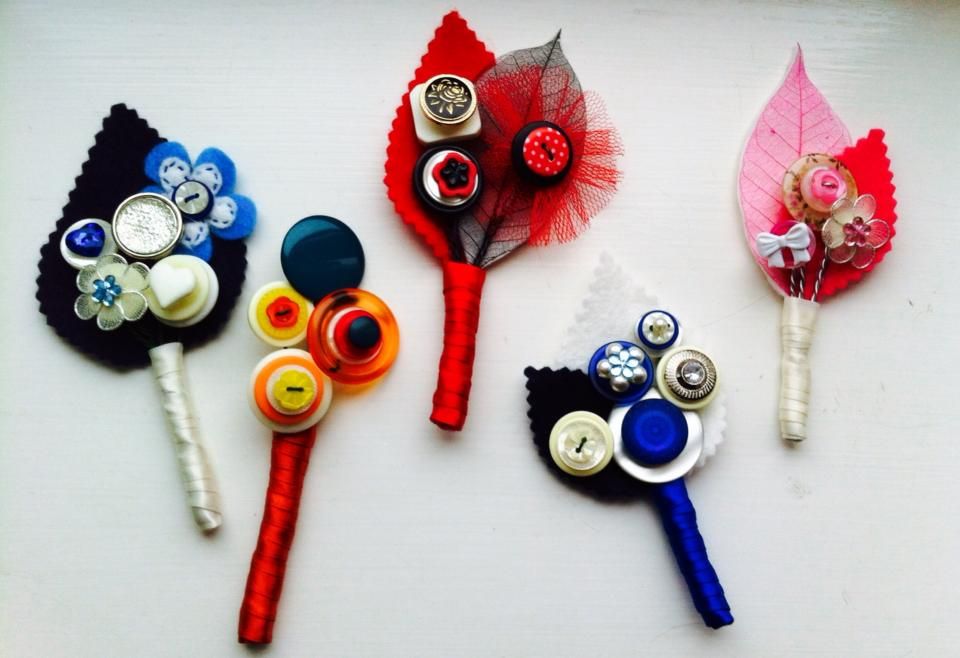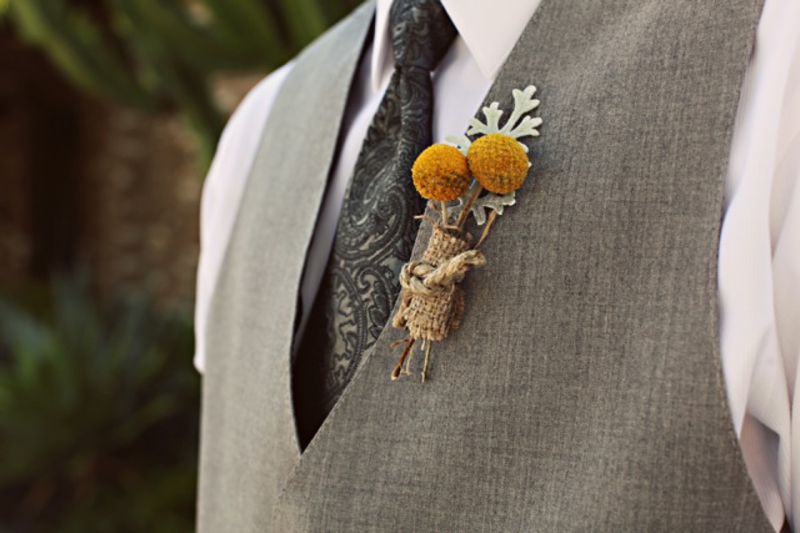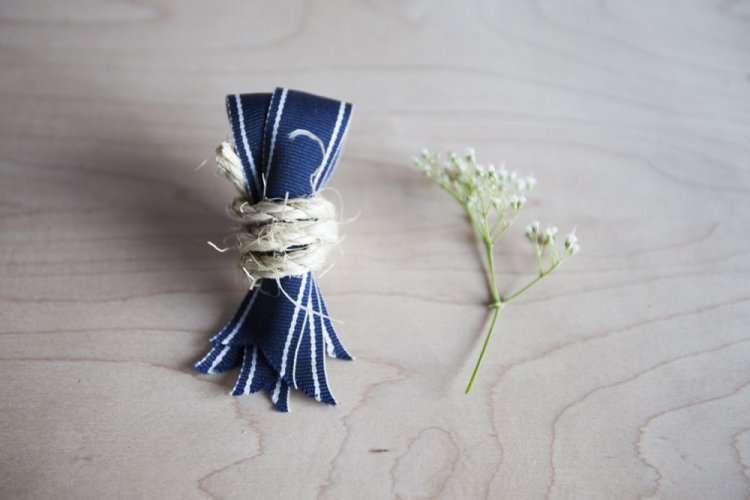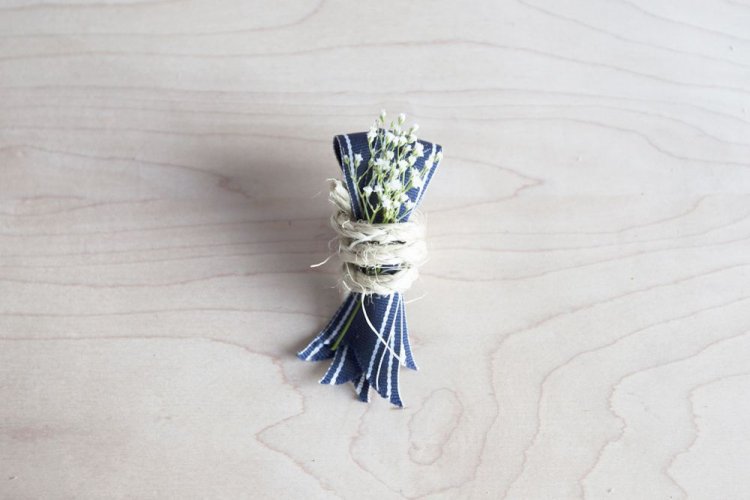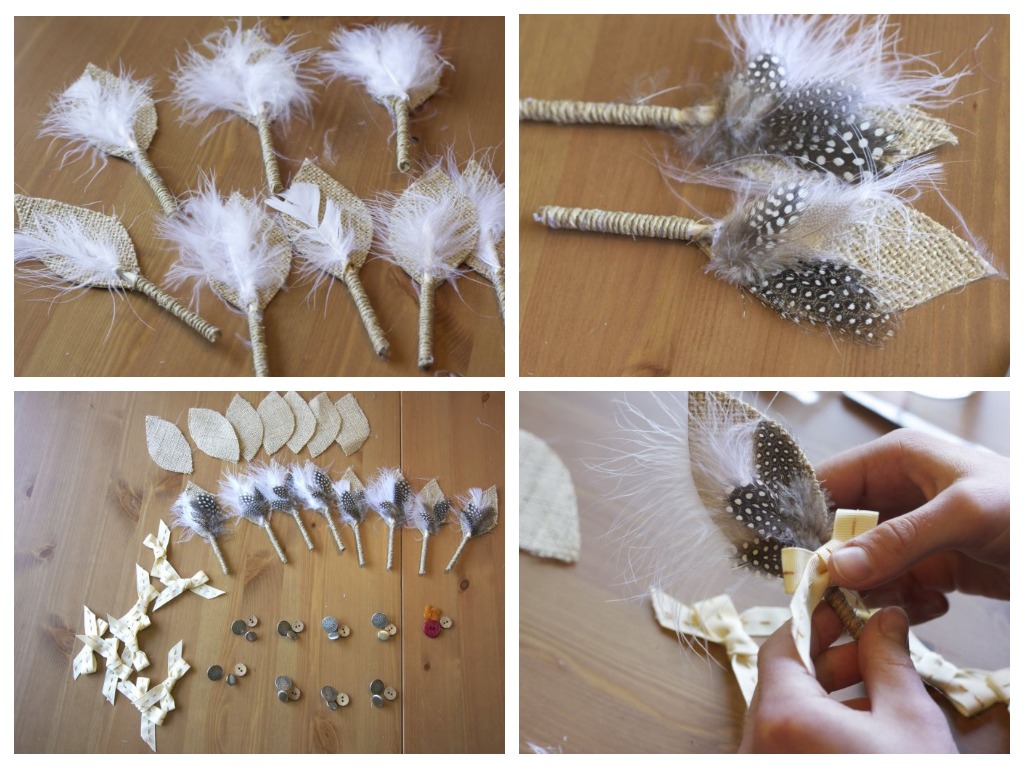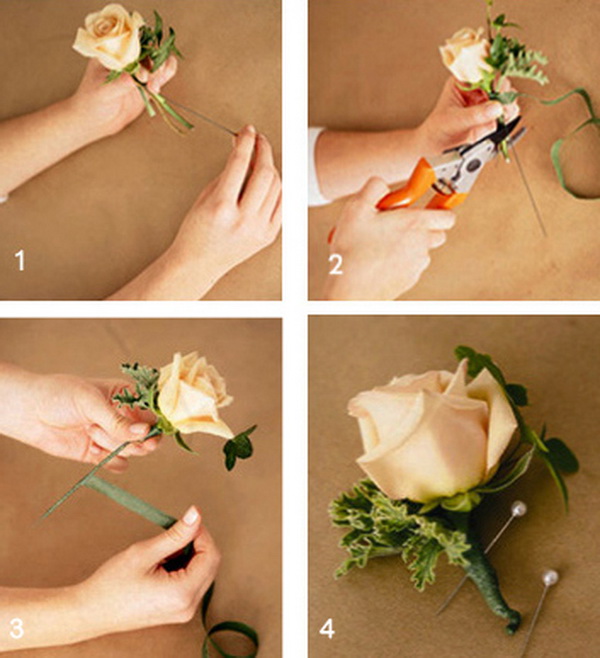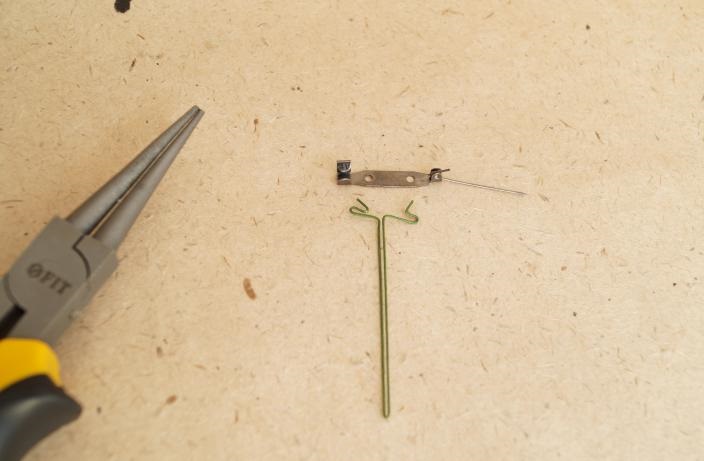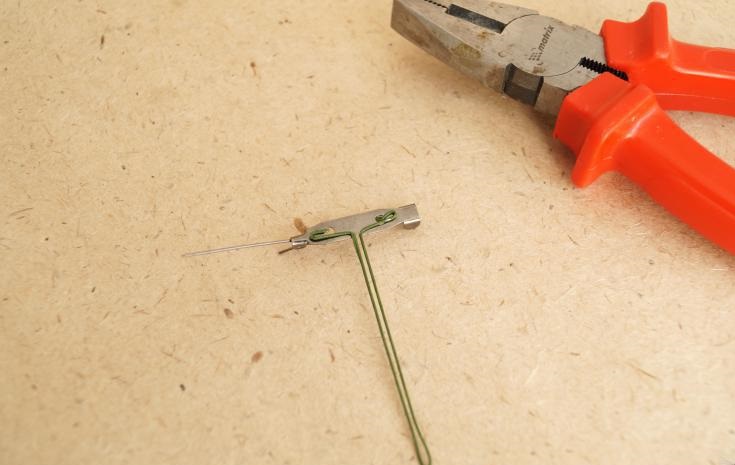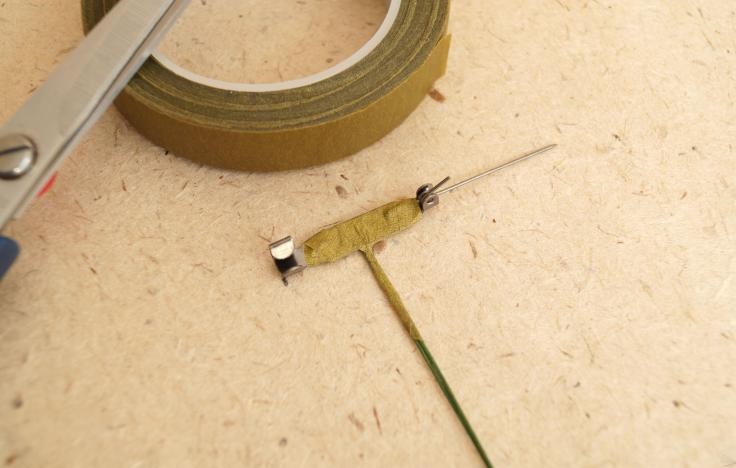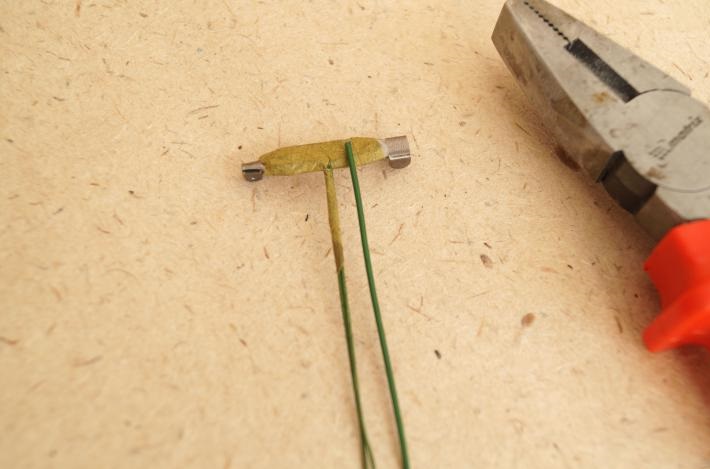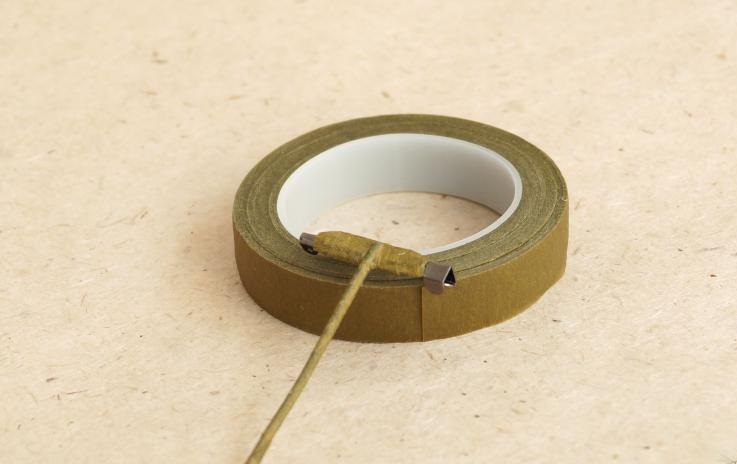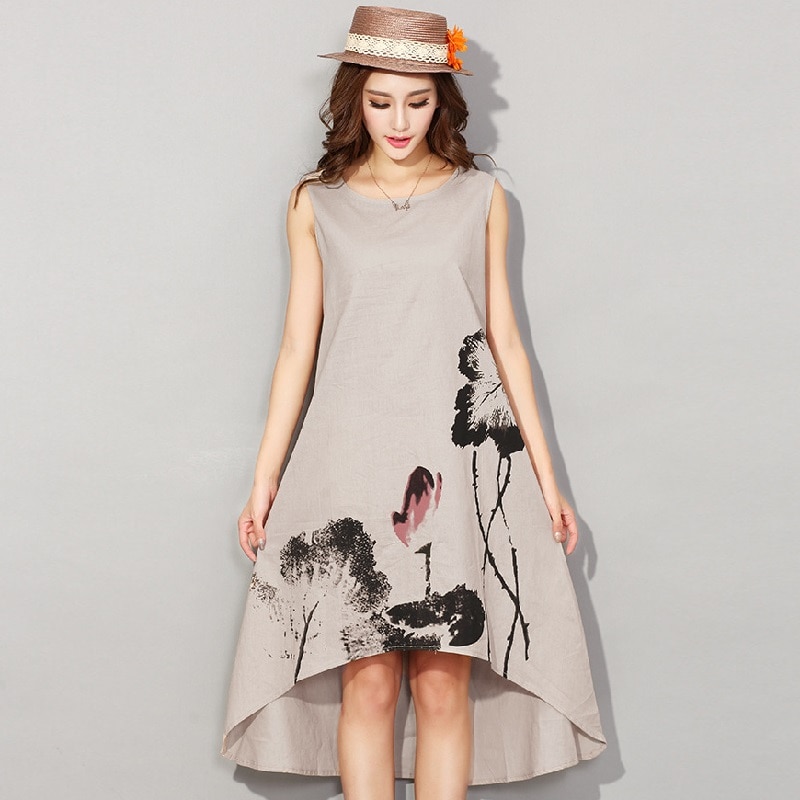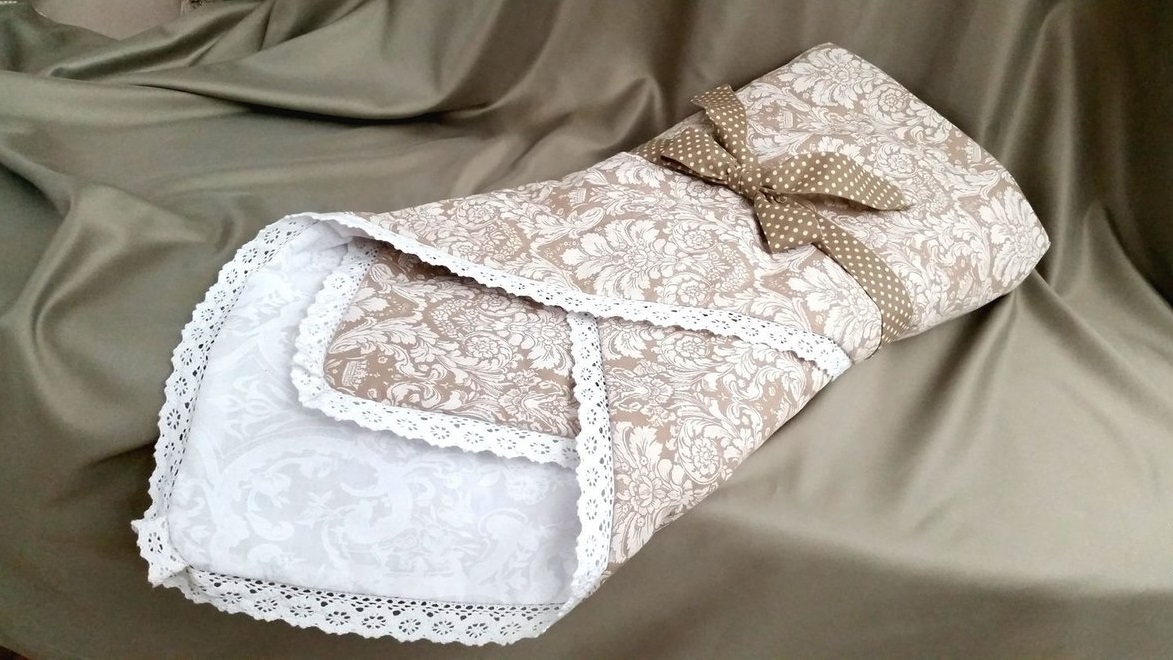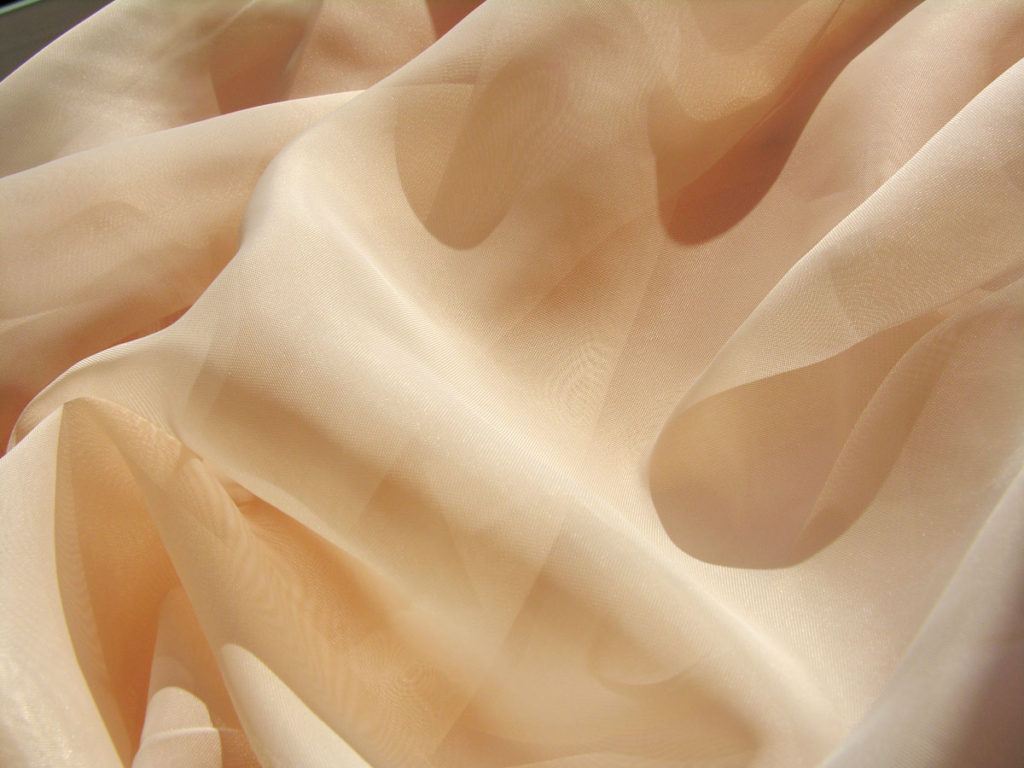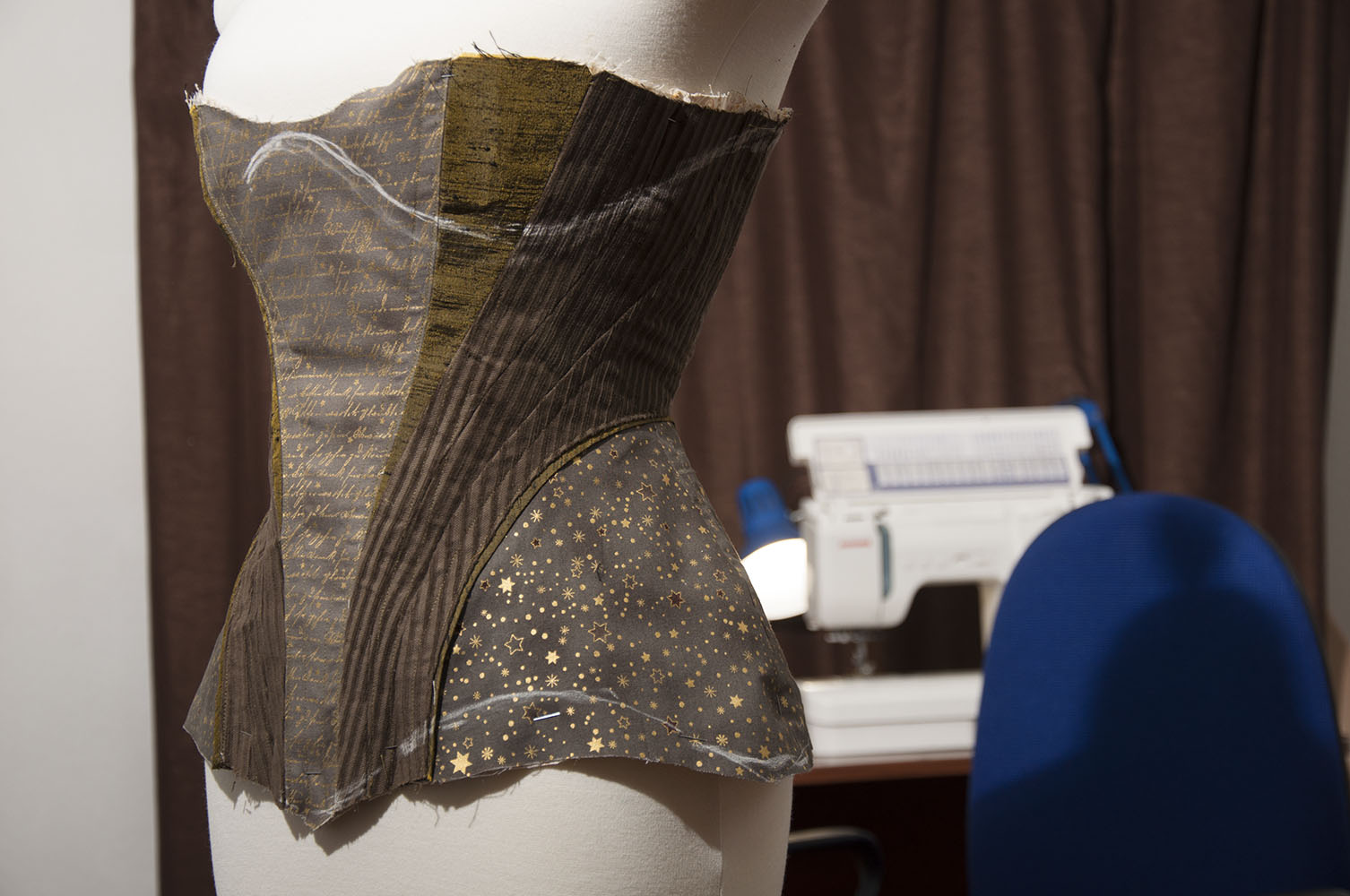A boutonniere is a small flower arrangement that is attached to clothing, a hairpin, or a bracelet. Such decoration is a mandatory attribute at a wedding celebration. It is often ordered in advance, but a do-it-yourself boutonniere looks more original and suits the newlyweds' image better than a factory-made one. This accessory can be made not only from natural flowers and fabric. Beads, ribbons, mesh, and various improvised materials are often used.
Review of materials
To understand how to make a boutonniere with your own hands, you should initially decide on the choice of materials. Most people trust the production of this wedding attribute to professional florists or wedding planners. Usually, the decoration is made of natural, less often artificial flowers. Boutonnieres are also made from unusual types of raw materials, which can even include clay or porcelain.
In search of creative ideas and non-standard materials for this accessory, craftsmen can use buttons, brooches and even figurines of favorite superheroes.
Live and artificial flowers
Often, newlyweds choose decorations made from natural flowers, which are complemented by various elements:
- plants, leaves;
- small natural or artificial berries;
- beads;
- ribbons;
- pieces of fabric;
- with special decorative mesh or wire.
Before making a boutonniere of flowers for a wedding with your own hands, you need to decide on the types of plants:
- Rose is the most common classic flower, which symbolizes love, sincerity of feelings. For men's boutonnieres, small buds are often chosen, which look harmonious with a suit or match the color scheme of a tie, bow tie.
- Freesia is a bright flower that looks good as a decoration on both the groom's jacket and the bride's bracelet.
- Peonies are delicate, beautiful flowers that symbolize restraint and spiritual purity. They are used to make boutonnieres for the bride and bridesmaid.
- Irises are a symbol of courage and strength, for this reason they are mainly used in boutonnieres for the groom or his best men.
- Tulip is a popular choice for wedding decorations. Often, one unopened or slightly open bud is used, which can be complemented by a green leaf.
- Orchid - this flower is a symbol of luxury and elegance. The main reason for choosing such a plant is a wide range of colors, among which you can choose the most suitable options for decorating a wedding dress. Usually orchids are used in an independent composition and are not complemented with decor.
- Callas - symbolize elegance, tenderness, are well suited for a classic wedding in subdued tones. The most common option is a boutonniere on the hand or a jacket made of flowers in white and pink shades.
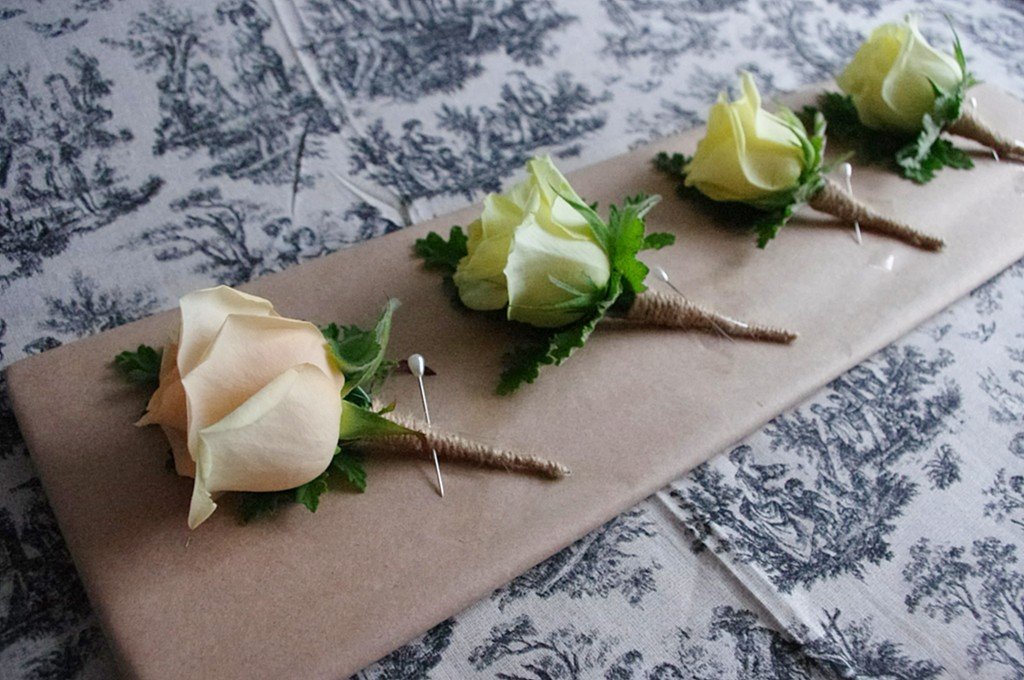
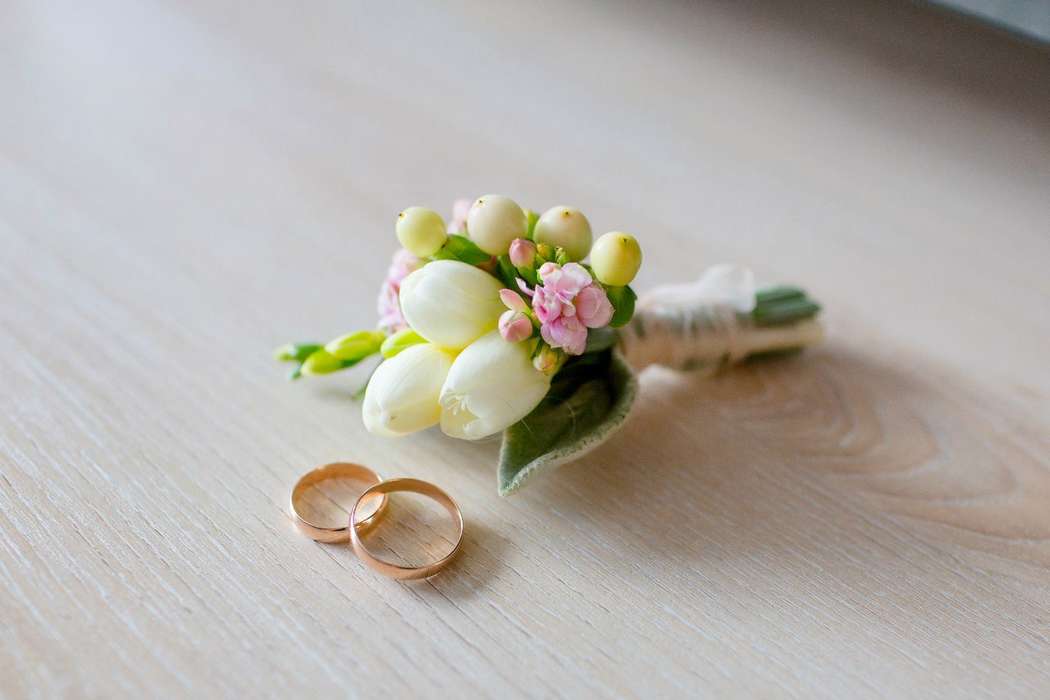
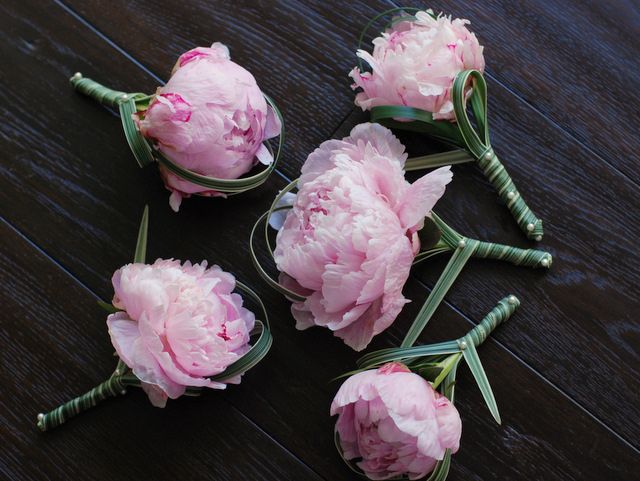

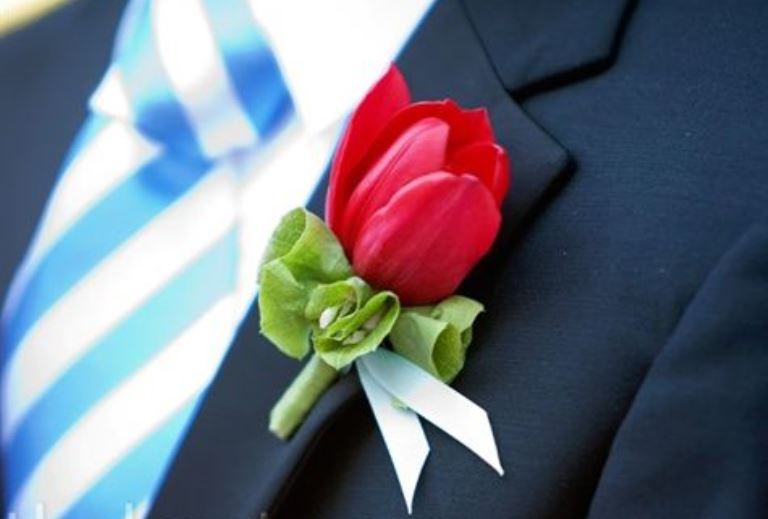
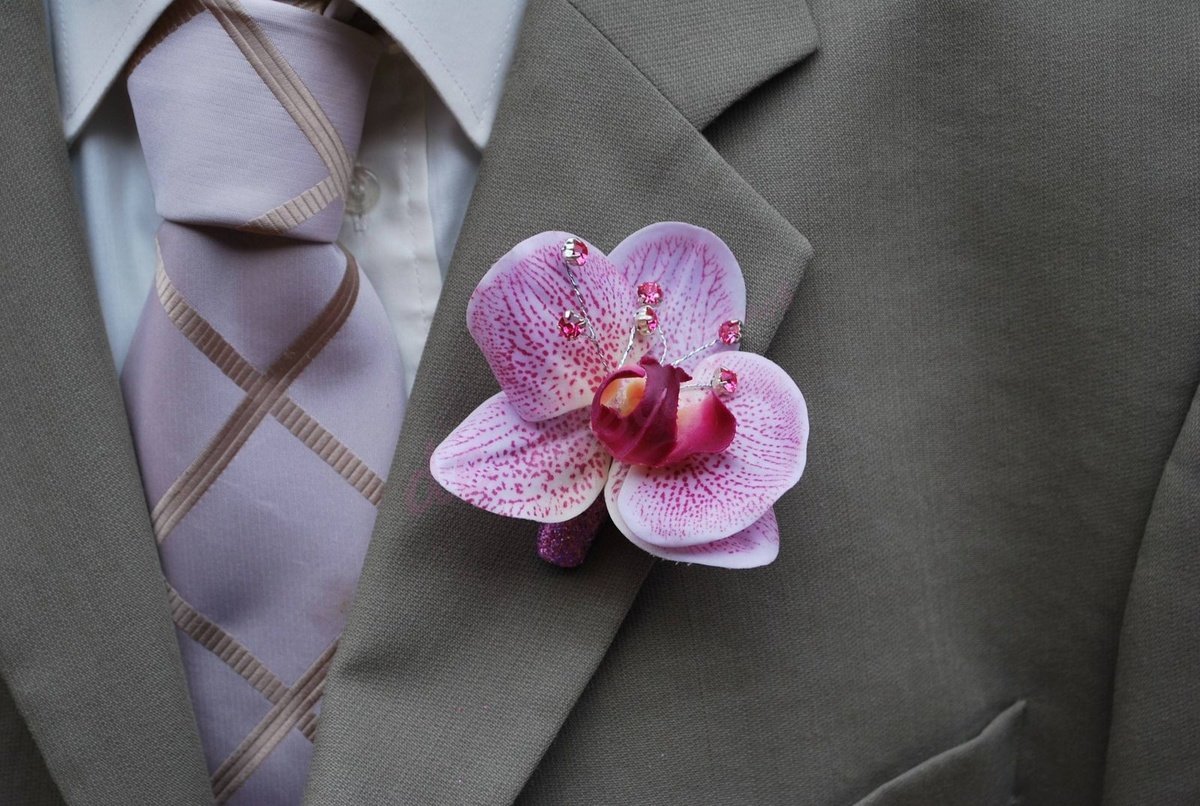

Foamiran
Foamiran is a foam material that is used in handicrafts to make various decorative elements; its structure resembles a sponge. Due to its pliability, it is easy to give it the necessary shape. Before making anything from foamiran, it should be preheated, then it will stretch well. After cooling, the material holds the resulting shape. Due to its obvious advantages and low cost, this material has become popular in the field of wedding decor, where it is most often used to create boutonnieres or other small accessories.
Ribbons
With the help of satin ribbons, you can complement a composition of fresh flowers or make your own decoration. The main advantage of this material is its low cost and relatively simple process of making an accessory, but its creation requires some handicraft skills. A boutonniere made of satin ribbons will be an excellent option in the case of a winter wedding, in which low temperatures can negatively affect fresh flowers. Before using satin material in making a boutonniere, you need to carefully consider the design and color scheme.
Organza and mesh
Using a combination of organza and decorative mesh, you can create an elegant and simple wedding decoration. Most often, artificial flowers are made from such materials with the addition of ribbons and other decorative elements. A single bud or a composition of several flowers that are intertwined can be made from mesh and organza. To make the simplest boutonniere from these materials, you need to cut out circles of different sizes and pre-burn the edges - this is necessary so that the material does not begin to crumble. After this, all the layers are successively placed on top of each other from large to small and the entire structure is secured with a pin or special beads.
Silk
Silk is the main material used to create a boutonniere, making up most of the entire composition. This fabric is very delicate and easily damaged, so when working with it, you need to be careful and have some experience in handicrafts. Silk flowers look elegant and delicate, and to create contrasts and accents, satin ribbons, nets, and various decorative accessories can be used with this material. DIY boutonnieres made of pastel-colored silk look especially elegant, and are suitable for classic weddings as decoration for bridesmaids.
Polymer clay
Polymer clay is becoming an increasingly popular material every year for making not only boutonnieres, but even bridal bouquets. Despite the name, flowers made on this basis look quite natural. In the case of professionally performed work, they are indistinguishable from natural ones. Another advantage of polymer clay is the long service life of such a wedding attribute. In addition, the material is hypoallergenic and is suitable for those who react badly to flower pollen.
Creative ideas
Wedding boutonnieres can be made from buttons, decorative or natural feathers, wheat ears, pine cones and other items. The main thing is to follow a few rules:
- the accessory should match the overall theme of the wedding;
- you need to choose organic colors to match your festive outfit;
- If the idea is original, it must correspond to the interests or preferences of the owner.
If you want to stand out, you can make your own boutonnieres from almost any materials that are not originally intended for creating jewelry. Such accessories are even made from buttons or caramel candies. You just need to take into account the weather conditions so that the boutonniere does not leave stains on your clothes.
Step-by-step master class
Having decided on the materials from which the boutonniere will be made, you can start working. But without the necessary experience, a self-made product may not be neat enough. A master class will help solve this problem. There are many original ways to create a boutonniere with your own hands on the Internet. Before starting work, you need to prepare the following tools:
- the material from which the accessory will be created;
- pins for fixing decorative elements and attaching boutonnieres to clothing;
- scissors or pruning shears;
- florist wire;
- nippers.
The list of required equipment may be supplemented depending on the accessory being manufactured.
Creative for the groom and best man
As a creative boutonniere, the groom and his best man can use a composition of ribbon, twine and additional decorative elements that match the theme of the wedding. This accessory option will not cost much, but will look laconic and elegant on a formal suit. To assemble this boutonniere for the groom with your own hands, you need to adhere to the following sequence of actions:
- Take two ribbons and cut them at the edges in the shape of the letter V, their total length should be approximately 8-10 cm.
- Gather the ribbons together and fold them in half, tie them with twine, wrapping them around the base several times.
- Add other decorative elements to the decoration as desired.
Finally, use a pin to secure the decoration to the clothes. It is recommended to check how the boutonniere looks on the clothes after the groom has put on the suit. When stretched, the accessory's appearance may change.
For guests made of feathers
An excellent option for creating a boutonniere for guests would be to use decorative or natural feathers of different colors. To create the decoration, you need to follow this algorithm of actions:
- Gather all the feathers into a bunch, forming a neat bouquet.
- Add other decorative elements (ribbons, beads, mesh) to the overall composition.
- Securely tie the base of the accessory with a ribbon of a suitable color and fix it with glue or a pin.
Finally, you need to fix the wedding attribute on the clothes. Such an accessory is easy to assemble and will cost very little. The materials can be purchased at any craft store.
For the bridesmaids made of roses
Even inexperienced needlewomen can make flower boutonnieres for bridesmaids with their own hands:
- Thread the floral wire through the base of the bud and position it so that there are even parts of the edges on both sides.
- The wire needs to be pressed against the stem and wrapped with a ribbon of a suitable color.
- Add leaves or other elements to the bud, which are pressed against the stem and wound with fabric tape.
- After the composition is fully composed, you need to cut off most of the stem length and leave 1-3 cm.
At the end, you need to secure the ribbon with a pin on the back of the accessory and use it to attach the decoration to the outfit.
Traditionally, a boutonniere is an accessory that consists of one bud, and this is the version that is made for the bridesmaid. The classic attribute is made from roses of a delicate shade.
How to Make a Boutonniere Base
If you want to make boutonnieres in the form of a brooch, but you don’t have a special fixing base at hand, you can create it yourself. To do this, you will need:
- pliers;
- florist wire;
- a pin that will act as a base;
- scissors;
- ruler for precise measurement;
- tape.
The procedure for creating a base for a wedding boutonniere:
- Cut a piece of floral wire that is equal to twice the length of the pin, bend it in the center, and spread 1 centimeter from the ends to the sides.
- Secure the wire to the pin using tape.
- Strengthen the resulting structure with another layer of floral wire, which is attached with tape.
On the prepared base, you can create a boutonniere of any size and from various materials; thanks to the rigid construction, the decoration will be securely held on clothing.
Video

